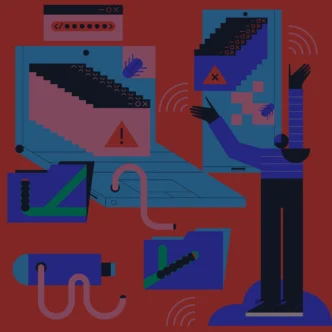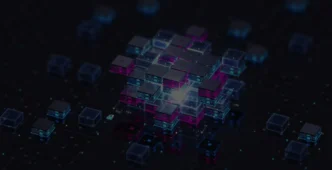Understanding Advanced Malware Analysis
Malware analysis is a highly technical process of examining malicious software to uncover its origin, behavior, functionality, and intent. Advanced malware analysis requires a deep understanding of various technical disciplines, tools, and methodologies. This comprehensive guide covers all advanced aspects, latest developments, and practical applications of malware analysis in 2025.
Building an Advanced Technical Foundation
To achieve proficiency in malware analysis, mastering several key technical areas is crucial:
Programming and Scripting Languages
| Language | Relevance |
| Assembly | Essential for reverse engineering, understanding malware internals |
| C/C++ | Malware often written in or targets these languages; aids reverse engineering efforts |
| Python | Scripting for automated analysis, extraction of malware indicators, and integration of analysis tools |
| JavaScript | Crucial for analyzing web-based malware |
| PowerShell | Used widely in malware scripting, particularly on Windows platforms |
Operating Systems Internals
- Windows Internals: Kernel architecture, PE files, registry, processes, threading, and memory management.
- Linux Internals: ELF binaries, system calls, processes, and memory management.
Advanced Networking
Understanding network protocols (TCP/IP, DNS, HTTP/HTTPS), packet analysis, tunneling techniques, and evasion tactics.
Establishing a Robust Malware Analysis Environment
A professional malware analysis environment includes:
- Virtualization Platforms: VMware, VirtualBox, QEMU.
- Automated Sandbox Environments: ANY.RUN, Cuckoo Sandbox, Hybrid Analysis.
- Snapshot & Rollback Management: Essential for reverting to clean states post-malware execution.
Advanced Malware Analysis Methodologies
Static Analysis
Static analysis examines malware without executing it. It involves:
- Analyzing executable files using IDA Pro, Ghidra, Radare2, or Cutter.
- Extracting strings, resources, imported/exported APIs, and embedded scripts.
- Identifying obfuscation techniques such as packing and encryption.
Dynamic Analysis
Executing malware within a controlled environment using:
| Tool | Purpose |
| Process Monitor | Monitor file and registry changes |
| Regshot | Capture registry snapshots pre- and post-execution |
| Wireshark | Capture and analyze network traffic for command and control communications |
| Fakenet-NG | Simulate network interactions and DNS requests |
Reverse Engineering
Deep analysis to reconstruct malware logic:
- IDA Pro/Ghidra: Disassembly, flowchart analysis, and code tracing.
- x64dbg/OllDbg: Debugging and breakpoint analysis.
- Radare2: Command-line disassembly and debugging.
Memory Forensics
Critical for uncovering hidden threats:
- Volatility Framework: Analyze memory dumps for malicious processes and code injection.
- Rekall: Live memory forensics, extraction of artifacts, and threat hunting.
Advanced Malware Analysis Techniques in 2025
AI-Powered Malware Analysis
The rise of AI-powered malware demands analysts become adept at:
- Using machine learning models to detect anomalies and behavioral patterns.
- Analyzing AI-driven evasion techniques employed by malware.
- Employing tools like VirusTotal Intelligence to analyze AI-generated malicious code.
Ransomware and Double Extortion Analysis
Modern ransomware requires expertise in:
- File encryption and decryption methodologies.
- Negotiation tactics used by threat actors.
- Persistent threat hunting methodologies and ransomware attack chain analysis.
Supply Chain Attack Investigations
Supply chain attack analysis involves:
- Identifying compromised third-party software components.
- Understanding software development lifecycles and update mechanisms.
- Tracking malicious code insertion and propagation methods.
Leveraging Advanced Tools and Resources
Essential Advanced Resources:
- Courses and Certifications: GIAC Reverse Engineering Malware (GREM), Offensive Security certifications.
- Books: “The Art of Memory Forensics” by Michael Hale Ligh and Andrew Case; “Practical Malware Analysis.”
- Community & Forums: Engage actively with MalwareTech, SANS ISC, and Reddit’s r/MalwareAnalysis.
Professional Analysis Platforms:
- ANY.RUN (interactive analysis)
- Intezer Analyze (genetic malware analysis)
- Joe Sandbox (deep dynamic analysis)
Practical Steps to Excel in Malware Analysis
- Consistently practice using real-world malware samples.
- Regularly participate in cybersecurity competitions and CTF challenges.
- Engage with threat intelligence communities for ongoing learning.
Alternative Specializations in Cybersecurity
If considering alternatives, professionals might explore:
- Threat Intelligence Analysis: Proactive threat research and intelligence dissemination.
- Incident Response and Management: Handling and mitigating active cybersecurity incidents.
- Vulnerability Research: Identifying and reporting security vulnerabilities.
Conclusion
Mastering advanced malware analysis demands continuous learning, practical experience, and adaptability to evolving threats. By following this comprehensive expert guide, cybersecurity professionals can effectively respond to complex, sophisticated malware threats, significantly strengthening digital resilience in 2025 and beyond.













